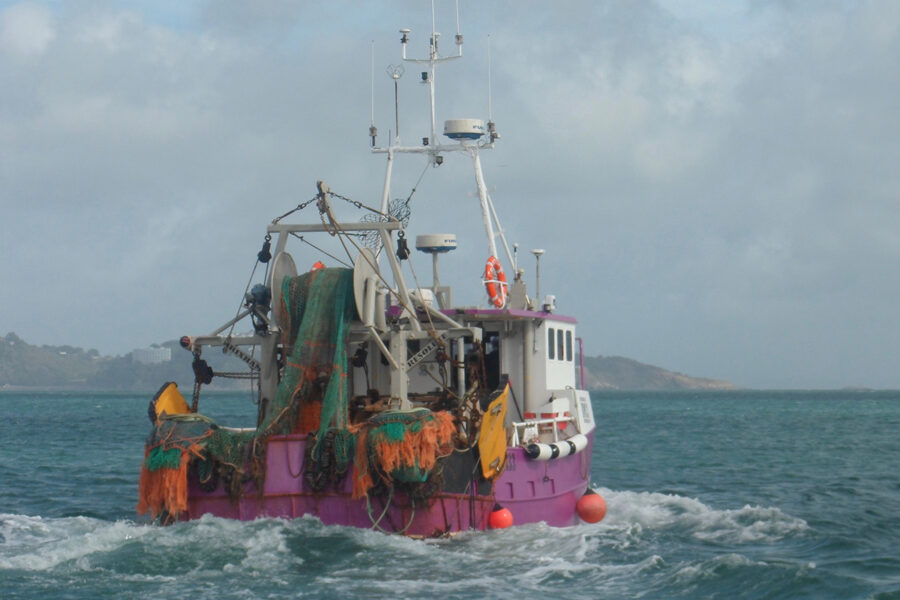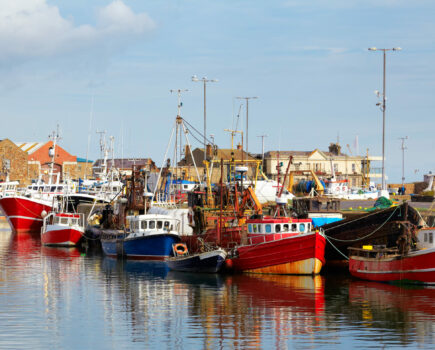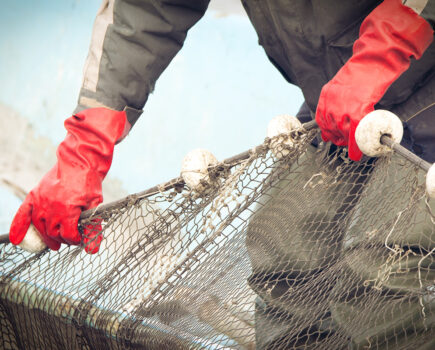With the UK Seafood Innovation Fund’s latest research and development projects underway, Fishing News is delving into some of the innovations that the fund has supported. This week: a technology designed to save fishermen’s lives by alerting them when their boat is at risk of capsizing
No fisherman needs to be told about the potential dangers of their work. The Marine Accident Investigation Branch reported that in 2022 alone, there were 28 serious injuries and three fatalities among UK fishing crew. Inadequate stability contributes significantly to this figure, being responsible for the majority of fatal accidents in the UK fishing fleet, and with vessels under 15m in length being particularly vulnerable.
But what exactly causes fishing vessels to become so unstable that they capsize and sink? That’s the question that Ken Smith, director of Hook Marine Ltd, wanted to investigate. The answer could then be applied in pilot trials of a monitoring device that would give fishers early warning of poor stability while at sea.
In 2022, the Seafood Innovation Fund (SIF) awarded £35,490 to Hook Marine to carry out a Call 3 feasibility study on monitoring the loss of vessel stability while at sea.
Over five months, Ken Smith and his colleagues took Hook Marine’s prototype SeaWise® monitors onto a variety of fishing vessels, including trawlers, potters and scallopers, as far north as Shetland and as far south as Brixham. Pilots at sea were vital. Conditions both onboard a vessel and of the sea itself are highly changeable, and cannot be accounted for during harbour stability tests. For example, a calm day can quickly turn into a stormy one, or the boat may use up fuel or take on a big haul of fish, altering its centre of gravity.
Due to this, the SeaWise monitor is designed to calculate what’s called the ‘metacentric height’ of a vessel on a continuous basis as it moves on the sea, with metacentric height being a key determinant of a vessel’s stability. If the monitor detects a change in stability, it produces visual and audible alarms to alert the crew in time for them to take action to avert the risk of capsizing.

The SeaWise monitor is being designed to be easy to install by fishermen themselves, in order to make it affordable across the fleet.
By the conclusion of the feasibility stage in October 2022, SeaWise was deemed to work well across the different types of fishing vessels, with Ken Smith crediting the help of the fishermen who supported the trial by having the monitor fitted. Meanwhile, the results of the pilot trials enabled Hook Marine to continually make improvements to the monitor software.
Following the successful completion of the feasibility study, Hook Marine received £85,500 in additional funding from SIF to carry out additional research and development on vessel stability. Commencing in spring 2023, the company hopes to use this phase to further investigate the effect that different sea states have on vessel behaviour, as well as making further refinements to software and hardware and fine-tuning SeaWise for smaller vessels under 15m, given that these vessels see the most accidents.
Ken Smith, who lives close to a fishing community in Ayrshire, says that it is partly because smaller vessels make up the bulk of the fleet that he is determined to make sure the monitor is as affordable as possible. Linked to this, the commercial version should be easy to install by fishermen themselves. Once the monitor is in place, the idea is that ‘all you have to do is punch in one or two details on the size of the vessel, and the setting up is pretty much done’.
Another challenge that Hook Marine is rising to is producing a model that can be fitted in all kinds of boats. After all, as Ken Smith says, ‘there’s no such thing as a standard fishing vessel’.
He says that the SIF funding has been ‘absolutely essential’, especially for a small business like his, in making the SeaWise monitor a reality. With the research and development stage due to complete in May 2024, he is pleased with progress so far.
Ken Smith cautions that SeaWise is no substitution for good seamanship, and that the monitor will not guarantee a vessel against capsizing. However, his hope is that as crews use the monitor, they will be able to increase their knowledge of how their vessel behaves while working out at sea, thus reducing the likelihood that the vessel will ever reach the point where capsizing is a risk.
The UK Seafood Innovation Fund (SIF) is part of the UK government’s £100m UK Seafood Fund. Through multiple calls since 2019, SIF has awarded a combined total of £17m to 116 feasibility or research and development projects across fisheries, aquaculture, processing and the supply chain. Its aim is to boost the resilience and sustainability of the UK seafood sector by supporting a diverse range of innovative and scalable ideas.
SIF is administered by the Centre for Environment, Fisheries and Aquaculture Science (Cefas) on behalf of the Department for Environment, Food and Rural Affairs (Defra).
For more information, click here.

This story was taken from the latest issue of Fishing News. For more up-to-date and in-depth reports on the UK and Irish commercial fishing sector, subscribe to Fishing News here or buy the latest single issue for just £3.30 here.
Sign up to Fishing News’ FREE e-newsletter here.








